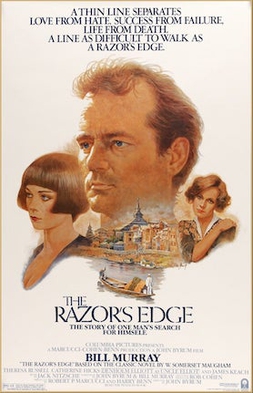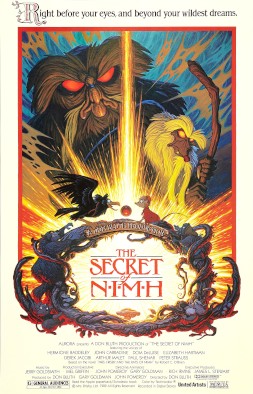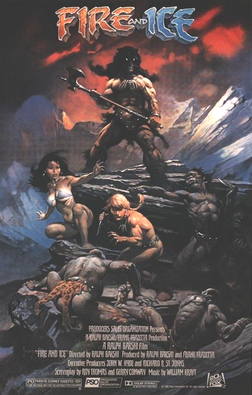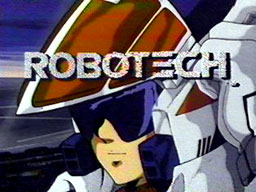Movies 1980-1984
Hyperion Flames Out
From The Hollywood Reporter, November 21st, 1984
Even Babe Ruth strikes out eventually. Despite their incredible early successes with Never Cry Wolf and Splash, Hyperion Studios has broken new ground with their first flop. First World War drama, The Razor’s Edge may have been the price for bringing Bill Murray to Ghostbusters, but oh what a price to pay! With a plodding plot and a passive protagonist, the vanity project was doomed from the start, with critics and audiences alike proclaiming it a dud. And while some applaud Murray’s dramatic acting chops and see a dramatic future ahead for him, general audiences have found it difficult to take the Saturday Night Live star seriously. The film looks likely to lose over $5 million and will surely be the fledgling studio’s first write-off. Let’s hope that their next outing, The Ballad of Edward Ford, is a better fit. However, rumors of a troubled production and infighting at Hyperion over the movie’s adult themes and explicit scenes provides an ill omen.
Game Over?
From The Hollywood Reporter, November 26th, 1984
Disney’s not having the merriest of Christmases this year. After a spectacular spring and summer with Ghostbusters, Back to the Future, and Splash, not only did Hyperion’s The Razor’s Edge fail to break even and The Black Cauldron fail to be the film that reinvigorated Disney Animation, but early sales for Tron: Return to the Network have been disappointing. The film has received mixed reviews and is generally considered a disappointing follow-up to the original Tron. While industry analysts predict that the film will be profitable, any hope of catching up to the returns of the original are certainly dashed. Still, the silver lining may be that the film has rejuvenated sales of the Tron line of merchandise and videogames and there is talk of developing a Tron television show[1].
A Pressure-Forged Diamond
From New York Times Movie Reviews, December 16th, 1984
The boon and bane of Hollywood truly is the “Troubled Production”. They lead to either hits or flops, it seems. Sometimes it brings us Apocalypse Now, but sometimes it brings us Heaven’s Gate. Thankfully, in the case of The Pope of Greenwich Village, it brings us a diamond forged by constant heat and pressure. The Pope of Greenwich Village, starring the fabulous Robert De Niro and Al Pacino in their first film starring together (they were both in The Godfather, Part II, but shared no screen time), is a master class on how to put together a crime drama. It’s two masters finally sharing the big screen, and it nearly didn’t happen. At first, they couldn’t get their two leads. Though Pacino was available for shooting, De Niro was busy doing Once Upon a Time in America and the contractual date of release was looming.
They tried to continue on with new actors, but their choice to play Charlie (the De Niro role), Mickey Roarke, was already under contract with Paramount to do Beverly Hills Cop. Director Michael Cimino pleaded for and eventually got an extension and thus went into principle photography the second that Once Upon a Time in America was complete. Even so, it reportedly required seven figures each to get De Niro and Pacino in the film.
And when filming finally began, with it came the troubles. Delays in filming due to weather and location difficulties mixed with prop problems and set issues. Rumors abounded of massive arguments between the two co-stars that bled over into the rest of the cast and crew. It is no secret that De Niro and Pacino, though good friends, had a friendly rivalry in their younger days that manifested in what seemed to their costars to be massive fights and fits of one-upmanship. But both stars deny the rumors of a feud. “It’s just how you talk when you’re from New York,” said Pacino in an interview. “You call someone a sorry [expletive deleted] like it’s the greatest of compliments.” “Yea,” added De Niro, “And this sorry [expletive deleted] has been a pain in my [expletive deleted] for years!” “Same to you, [expletive deleted],” said Pacino, causing both to laugh.
And, frankly, this friendly belligerence translated well to the big screen. Like their actors, the two cousins have clearly had a long and complicated life together. And when their “can’t miss” robbery goes spectacularly wrong, they are soon on the wrong side of both the law and the mafia. The writing is great. The screen chemistry is fantastic, Cimino’s direction is superb, and the raw emotion is tangible. The Pope of Greenwich Village is a must-see for those un-enamored with seeing a Disney cartoon or Tron sequel this fall[2].
The Pope of Greenwich Village, Rated R for language, violence, sexuality, and crime; ⭐⭐⭐⭐
Pictures Released by Walt Disney Studios, 1980-1984[3]
[1] Tron: Return to the Network will gross $45 million against a $25 million budget. Merch and game sales will quadruple that. The TV show, however, will be delayed due to cost and technology.
[2] In our timeline Roarke was available and they met their contractual deadline. The film is considered excellent, but was largely a flop. Here The Pope of Greenwich Village will be a modest success and earn some awards and be recalled as “that movie with both Di Niro and Pacino”, though few will call it either of their best.
[3] Director’s Cap tip to @MatthewFirth for requesting this. It’s actually been very helpful for me to organize my timeline, so thanks!
From The Hollywood Reporter, November 21st, 1984
Even Babe Ruth strikes out eventually. Despite their incredible early successes with Never Cry Wolf and Splash, Hyperion Studios has broken new ground with their first flop. First World War drama, The Razor’s Edge may have been the price for bringing Bill Murray to Ghostbusters, but oh what a price to pay! With a plodding plot and a passive protagonist, the vanity project was doomed from the start, with critics and audiences alike proclaiming it a dud. And while some applaud Murray’s dramatic acting chops and see a dramatic future ahead for him, general audiences have found it difficult to take the Saturday Night Live star seriously. The film looks likely to lose over $5 million and will surely be the fledgling studio’s first write-off. Let’s hope that their next outing, The Ballad of Edward Ford, is a better fit. However, rumors of a troubled production and infighting at Hyperion over the movie’s adult themes and explicit scenes provides an ill omen.
* * *
Game Over?
From The Hollywood Reporter, November 26th, 1984
Disney’s not having the merriest of Christmases this year. After a spectacular spring and summer with Ghostbusters, Back to the Future, and Splash, not only did Hyperion’s The Razor’s Edge fail to break even and The Black Cauldron fail to be the film that reinvigorated Disney Animation, but early sales for Tron: Return to the Network have been disappointing. The film has received mixed reviews and is generally considered a disappointing follow-up to the original Tron. While industry analysts predict that the film will be profitable, any hope of catching up to the returns of the original are certainly dashed. Still, the silver lining may be that the film has rejuvenated sales of the Tron line of merchandise and videogames and there is talk of developing a Tron television show[1].
* * *
A Pressure-Forged Diamond
From New York Times Movie Reviews, December 16th, 1984
The boon and bane of Hollywood truly is the “Troubled Production”. They lead to either hits or flops, it seems. Sometimes it brings us Apocalypse Now, but sometimes it brings us Heaven’s Gate. Thankfully, in the case of The Pope of Greenwich Village, it brings us a diamond forged by constant heat and pressure. The Pope of Greenwich Village, starring the fabulous Robert De Niro and Al Pacino in their first film starring together (they were both in The Godfather, Part II, but shared no screen time), is a master class on how to put together a crime drama. It’s two masters finally sharing the big screen, and it nearly didn’t happen. At first, they couldn’t get their two leads. Though Pacino was available for shooting, De Niro was busy doing Once Upon a Time in America and the contractual date of release was looming.
They tried to continue on with new actors, but their choice to play Charlie (the De Niro role), Mickey Roarke, was already under contract with Paramount to do Beverly Hills Cop. Director Michael Cimino pleaded for and eventually got an extension and thus went into principle photography the second that Once Upon a Time in America was complete. Even so, it reportedly required seven figures each to get De Niro and Pacino in the film.
And when filming finally began, with it came the troubles. Delays in filming due to weather and location difficulties mixed with prop problems and set issues. Rumors abounded of massive arguments between the two co-stars that bled over into the rest of the cast and crew. It is no secret that De Niro and Pacino, though good friends, had a friendly rivalry in their younger days that manifested in what seemed to their costars to be massive fights and fits of one-upmanship. But both stars deny the rumors of a feud. “It’s just how you talk when you’re from New York,” said Pacino in an interview. “You call someone a sorry [expletive deleted] like it’s the greatest of compliments.” “Yea,” added De Niro, “And this sorry [expletive deleted] has been a pain in my [expletive deleted] for years!” “Same to you, [expletive deleted],” said Pacino, causing both to laugh.
And, frankly, this friendly belligerence translated well to the big screen. Like their actors, the two cousins have clearly had a long and complicated life together. And when their “can’t miss” robbery goes spectacularly wrong, they are soon on the wrong side of both the law and the mafia. The writing is great. The screen chemistry is fantastic, Cimino’s direction is superb, and the raw emotion is tangible. The Pope of Greenwich Village is a must-see for those un-enamored with seeing a Disney cartoon or Tron sequel this fall[2].
The Pope of Greenwich Village, Rated R for language, violence, sexuality, and crime; ⭐⭐⭐⭐
* * *
Pictures Released by Walt Disney Studios, 1980-1984[3]
| Release date | Title | Studio label | Co-production with |
| February 8, 1980 | Midnight Madness | Walt Disney Productions | |
| March 7, 1980 | Lady and the Tramp (re-release) | Walt Disney Productions | |
| April 17, 1980 | The Watcher in the Woods | Walt Disney Productions | |
| June 25, 1980 | Herbie Goes Bananas | Walt Disney Productions | |
| The Last Flight of Noah's Ark | Walt Disney Productions | ||
| December 12, 1980 | Popeye | Walt Disney Productions | Paramount Pictures, Robert Evans Productions and King Features Entertainment; International distribution. |
| March 6, 1981 | The Devil and Max Devlin | Walt Disney Productions | |
| March 20, 1981 | Amy | Walt Disney Productions | |
| April 3, 1981 | Alice in Wonderland (re-release) | Walt Disney Productions | |
| June 26, 1981 | Dragonslayer | Walt Disney Productions | Paramount Pictures; international distribution |
| July 10, 1981 | The Fox and the Hound | Walt Disney Productions | |
| August 7, 1981 | Condorman | Walt Disney Productions | |
| November 6, 1981 | Time Bandits | HandMade Films | Distributed by Buena Vista under the Fantasia Films label |
| December 9, 1981 | The Dark Crystal | Fantasia Films | Henson Associates |
| February 5, 1982 | Night Crossing | Walt Disney Productions | |
| March 16, 1982 | Robin Hood (re-release) | Walt Disney Productions | |
| April 2, 1982 | Fantasia (re-release) | Walt Disney Productions | |
| June 4, 1982 | Bambi (re-release) | Walt Disney Productions | |
| July 9, 1982 | A Muppet Mystery! | Walt Disney Productions | Henson Associates |
| July 30, 1982 | Tex | Walt Disney Productions | |
| September 17, 1982 | Peter Pan (re-release) | Walt Disney Productions | |
| October 6, 1982 | Something Wicked This Way Comes [w/ Short Vincent] | Fantasia Films | |
| December 17, 1982 | Tron [w/ Short Fun with Mr. Future] | Walt Disney Productions | Lisberger-Kushner Productions |
| March 11, 1983 | Trenchcoat | Walt Disney Productions | |
| March 25, 1983 | The Sword in the Stone (re-release) [w/ Short Winnie the Pooh and a Day for Eeyore] | Walt Disney Productions | |
| July 15, 1983 | Snow White and the Seven Dwarves (re-release) [w/ Short Dopey and the Timid Turtle] | Walt Disney Productions | |
| October 7, 1983 | Never Cry Wolf | Hyperion Pictures | Amarok Productions Ltd. |
| November 4, 1983 | Running Brave | Englander Productions | Distributed by Buena Vista Distribution |
| December 16, 1983 | The Rescuers (re-release) [w/ Short Mickey’s Christmas Carol] | Walt Disney Productions | |
| January 27, 1984 | Pete’s Dragon (re-release) | Walt Disney Productions | |
| February 17, 1984 | Ladyhawke | Fantasia Films | |
| March 9, 1984 | Splash | Hyperion Pictures | |
| May 4, 1984 | Pinocchio (re-release) [w/ Short Oh Big Brother!] | Walt Disney Productions | |
| June 8, 1984 | Ghostbusters | Fantasia Films | Universal Pictures (name rights only) |
| July 13, 1984 | Muppets on Broadway [w/ Short Fozzie’s Follies] | Walt Disney Productions | Henson Associates (Note: this was the last co-production from the independent HA before merging with Disney) |
| July 27, 1984 | The Neverending Story | Constantin Films AG | Distributed by Buena Vista under the Fantasia Films label |
| August 15, 1984 | Back to the Future | Fantasia Films | |
| September 21, 1984 | The Jungle Book (re-release) [w/ Short Where the Wild Things Are] | Walt Disney Productions | |
| October 19, 1984 | The Razor’s Edge | Hyperion Pictures | Silver Screen Partners II |
| November 16, 1984 | The Black Cauldron [w/ Short The Nightmare Before Christmas] | Walt Disney Productions | |
| December 7, 1984 | Tron: Return to the Network | Fantasia Films |
[1] Tron: Return to the Network will gross $45 million against a $25 million budget. Merch and game sales will quadruple that. The TV show, however, will be delayed due to cost and technology.
[2] In our timeline Roarke was available and they met their contractual deadline. The film is considered excellent, but was largely a flop. Here The Pope of Greenwich Village will be a modest success and earn some awards and be recalled as “that movie with both Di Niro and Pacino”, though few will call it either of their best.
[3] Director’s Cap tip to @MatthewFirth for requesting this. It’s actually been very helpful for me to organize my timeline, so thanks!










